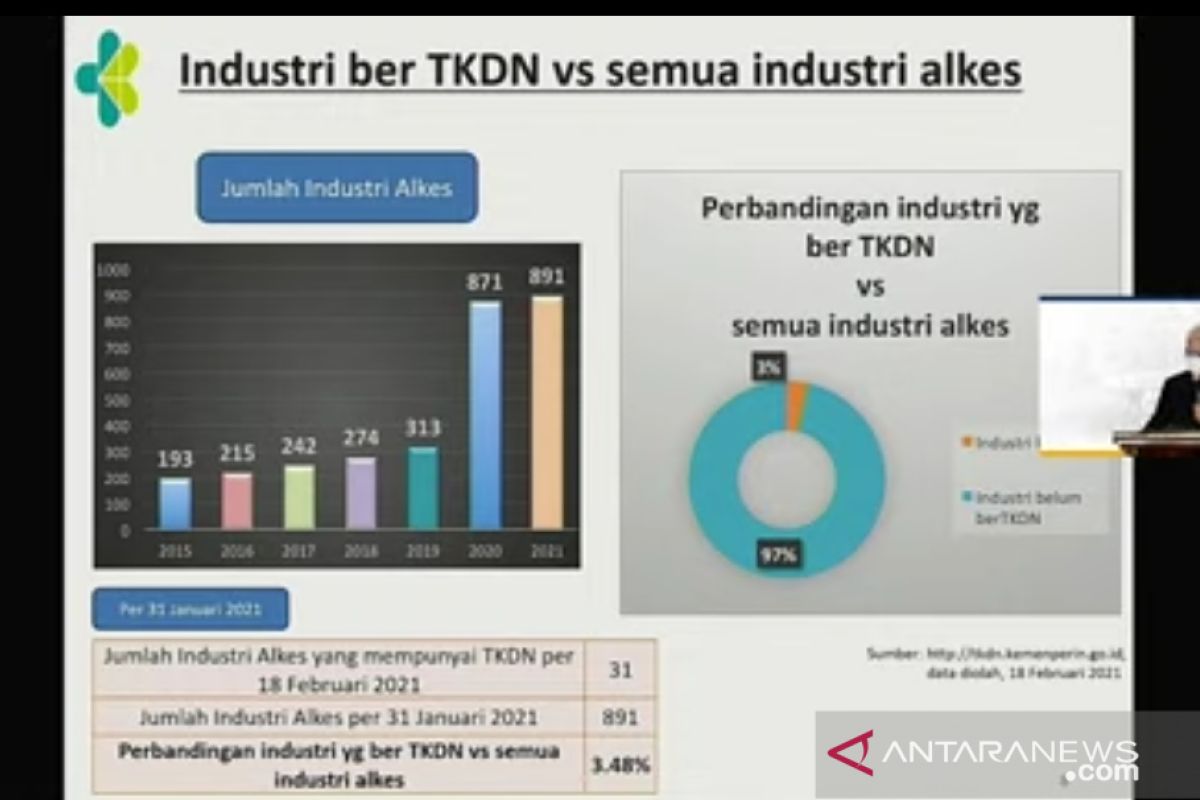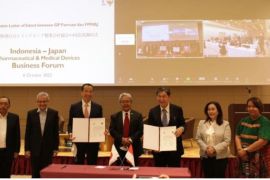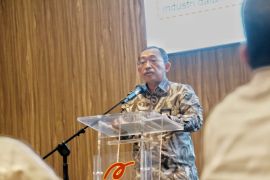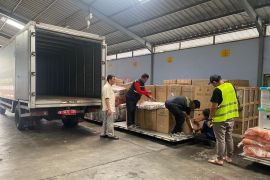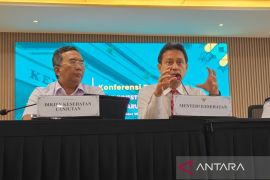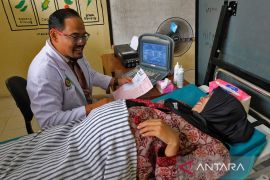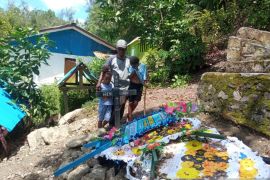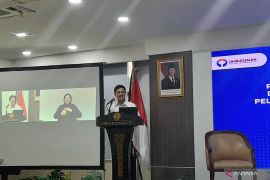Hence, imports continue to dominateJakarta (ANTARA) - The Ministry of Health highlighted that imported raw material components were still largely used in the production of medical devices in Indonesia.
"During the COVID-19 pandemic in 2020, the number of industries in this sector increased, from 303 to 871. However, only 3.48 percent of them comply with the local content requirement (TKDN). Hence, it is still very small," Special Staff of the Minister of Health Laksono Trisnantoro stated virtually during a National Forum for Independence and Resilience of the Medical Device Industry on the Indonesian Ministry of Health's YouTube channel monitored here, Monday.
The low use of domestic raw materials for the production of medical devices was also seen in the pattern of transactions in electronic catalogs, which only accounted for 22 percent of the total transactions.
Related news: Indonesia produces 3 percent of drugs, imports 97 percent: Minister
Trisnantoro later noted that TKDN is a key instrument to measure the self-reliance of the domestic pharmaceutical and medical device industry. However, this provision has not become the main instrument.
"We need a key policy that becomes an instrument to measure whether we are progressing, are stagnant, or maybe retreating," he stated.
Trisnantoro remarked that the TKDN policy is still relatively new and continues to be developed in Indonesia. This necessitates the government to apply the two rules of the procurement of domestic medical devices (AKD) and foreign medical devices (AKL). This condition allows producers to choose the supply of raw materials.
Related news: Realization of medical equipment import incentives reaches Rp799 bln
"Hence, imports continue to dominate," he added.
Trisnantoro explained that domestic medical devices had also not guaranteed that all their components were using domestic materials, as some of them still relied on imported raw materials.
He said the government's policy in enabling the medical device business to become self-reliant during the COVID-19 pandemic had continued to encounter several obstacles.
"The president pointed to the serious weakness of the medicine, vaccine, and medical device industry not yet having become self-reliant which is something that we must address," he remarked.
Related news: Govt must prioritize domestic medical devices during procurement: MPR
He identified numerous obstacles, including TKDN regulations and the process of procuring government goods or services electronically (e-procurement), deemed to still not be optimal.
Another obstacle is the industry's incentives, from upstream to downstream, which are still unclear and the limited capacity of the national pharmaceutical industry in managing the availability of raw materials.
Related news: Indonesia relentlessly works toward lowering medical device imports
"The raw materials for medical devices are very complex. There are more than 11 raw materials for medical devices, ranging from cloth and steel to nuclear isotopes. It is not easy to manage these raw materials," he pointed out.
Trisnantoro also highlighted the activities of pre- and post-market testing for advanced medical equipment.
"We also do not have a standard system for clinical trials. Industrial data is still being chopped up, and research is not really good," he concluded.
Related news: Rupiah appreciates following Fed Chair's statement on tapering
Related news: Bali immigration office deports US citizen
Translator: Andi F, Resinta S
Editor: Fardah Assegaf
Copyright © ANTARA 2021
